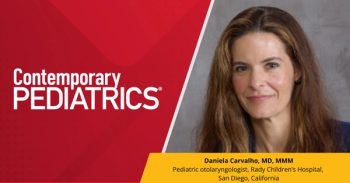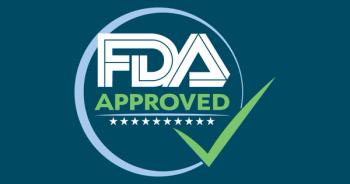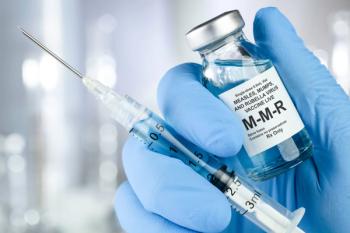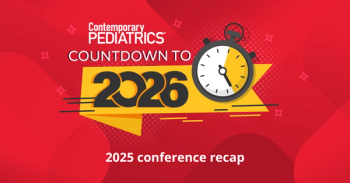
- August 2025
- Volume 41
- Issue 5
A brief review of primary care resources and toolkits for the stimulant shortage
Explore essential resources and toolkits for managing the ongoing stimulant medication shortage affecting ADHD treatment and patient care.
Drug shortages have historically led to economic impacts, affecting labor costs and the expenses of alternative medications, as well as clinical impacts, such as increased medication errors and therapy delays. In October 2022, the FDA announced a shortage of the immediate-release formulation of amphetamine mixed salts, commonly known by the brand name Adderall, which is used to treat attention-deficit/hyperactivity disorder (ADHD) and narcolepsy. Both the extended-release and immediate-release forms of methylphenidate have been in shortage since December 2022, and July 2023, respectively. Similarly, the extended-release and immediate-release forms of amphetamine have faced a shortage since August 2022, and July 2022, respectively.1
Several factors have contributed to the current shortage of stimulant medications. Adderall has been in short supply due to manufacturing issues at Teva Pharmaceuticals USA, Inc, the drug’s largest producer.2 Furthermore, a letter from the US Drug Enforcement Administration (DEA) in November 2023 highlighted that manufacturers did not use their allotted quota amounts, which contributed to the lack of availability of stimulant medications.3 The initial shortage of generic Adderall prompted patients and providers to seek alternative medications, such as the generic and brand-name forms of methylphenidate, including Concerta, Ritalin, and Vyvanse. As a result, these alternatives have also become scarce. Max Wiznitzer, MD, a professor of pediatric neurology at Case Western Reserve University in Cleveland, Ohio, shared his experiences with Neurology Today in 2023 on frequently modifying prescriptions and receiving calls from patients unable to obtain their prescriptions at local pharmacies.4 Similarly, Jeffrey Steinberg, MD, a neurologist in Plantation, Florida, who treats many adult ADHD and narcolepsy patients, emphasized in that same article the urgency of the shortage, noting that switching medications is complicated because it carries risks of reduced treatment efficacy and often leads to insurance complications.4 Consequently, many patients have experienced disruptions in their quality of life, work performance, and relationships while trying to navigate these obstacles.4
The extended stimulant shortage has been further compounded by several factors, including the rise in stimulant prescribing due to improved telehealth access, temporary suspensions of the Ryan Haight Online Pharmacy Consumer Protection Act of 2008 (Ryan Haight Act), and the psychoeducational impact of the COVID-19 pandemic on patients.5 According to the DEA-commissioned report on stimulant prescription trends, the number of stimulant prescriptions dispensed increased by 60% from 2012 to 2023—from 50.4 million to 80.8 million.6 Since the onset of the COVID-19 pandemic, telemedicine has significantly increased, especially in specialties with chronic diseases such as psychiatry.7 In 2008, the US Department of Health and Human Services (HHS) implemented the Ryan Haight Act to regulate telehealth medication prescriptions.8 However, this act was temporarily suspended in January 2020 during the COVID-19 pandemic so that providers could prescribe DEA-controlled substances without requiring in-person patient exams.9 This suspension led to an increase in psychostimulant prescribing and a higher demand for Adderall, further contributing to the stimulant shortage.9 Recently, the DEA and the HHS extended these telemedicine flexibilities through December 31, 2025, to work on final telemedicine regulations.10
Another possible contributing factor to the rise in demand for stimulants is the increased recognition of ADHD symptoms during the COVID-19 pandemic, particularly among high-income families. The monthly stimulant dispensing rate increased by 11.8 per 100,000 individuals (95% CI, 10.0-13.6) after April 2020, with a higher rate of 15.5 per 100,000 individuals among children and youth living in the highest-income neighborhoods and a lower rate of 9.3 per 100,000 individuals living in the lowest-income neighborhoods. With increased parental recognition of student challenges in distance-learning environments at home, it is possible that families with higher incomes had more resources for virtual appointments, highlighting the importance of health equity in medically underserved communities.11
Elevated demand for stimulants has also been affected by controversial clinical models. On June 13, 2024, the US Department of Justice announced that it had charged 2 individuals with health care fraud for facilitating access to Adderall and other stimulants with unclear justification.12 Ruthia He, founder and CEO of Done Global Inc, and David Brody, clinical president of Done Health PC, allegedly utilized telemedicine to target and profit from patients with substance use disorders.12 This redirection of the limited Adderall supply exacerbated the shortage and disrupted access to prescription stimulant medications.12 A press release from the DEA noted another case in which Truepill, a retail pharmacy for telehealth companies such as Cerebral, unlawfully filled stimulant prescriptions.13
Despite the FDA’s announcement of the ADHD medication shortage in 2022, neither the FDA nor the DEA has provided a clear explanation or taken broader action. This shortage points to a larger issue within national drug prescription policy and medication supply control. The FDA and DEA are, however, collaborating with manufacturers, professional groups, and health care providers to develop a team-based solution. Their efforts aim to resolve the situation by redistributing allotments and supporting appropriate diagnosis and treatment of ADHD.14
Notably, there have been numerous reports of stimulant shortages internationally as well. For example, some companies, including Teva Canada, have reported shortages of extended-release amphetamine and extended-release methylphenidate due to “disruption of the manufacture of the drug.” These shortages each lasted for a few months at a time, which is considerably shorter than the shortage in the United States.15 In addition, the European Medicines Agency is experiencing an ongoing shortage of ADHD medicines such as atomoxetine, methylphenidate, and lisdexamfetamine due to manufacturing issues and an unexpected increase in demand for medicines used to treat ADHD.16 In Australia, there have been methylphenidate shortages since 2024 due to manufacturing issues.17 We attempted to search international literature relevant to this topic, but no other regions in the world were identified as affected.
This article aims to provide a commentary on the resources available in light of the stimulant shortage, with the purpose of efficiently providing a thorough tool kit of resources to providers.
Methods
We conducted a literature search in the PubMed database for articles related to the recent and ongoing shortage of amphetamine and methylphenidate. We used key phrases like stimulant shortage and FDA, DEA; methylphenidate availability; amphetamine availability; Ryan Haight Act; and prescription regulations. We also manually looked through the reference lists of relevant articles, and we selected the final articles based on the relevance of the abstracts and the credibility of the researchers. We recommend that a systematic review be conducted to determine the exact cause of the shortage.
The FDA Drug Shortages list1 was last checked on March 27, 2025.
Summary of available resources
First-choice medications for ADHD treatment are methylphenidates for children and adolescents and amphetamines for adults. These 2 classes consist of numerous stimulant formulations and treatments, with several tools available to help choose a plan. Psychiatric Times™ published a dosing guide that explains and accounts for the factors of isomer formulation and duration of action,18 and the website
The Nationwide Children’s Hospital and Partners For Kids developed a nuanced document with evidence-based clinical guidelines and expert opinions to help primary care practitioners and behavioral health providers treat children with ADHD.20 This document covers screening, pharmacogenomic testing, preferred stimulants, and patient-centered considerations as well as providing a step-by-step guide on prescribing long-acting stimulant medications.20 The American Association of Psychiatric Pharmacists’ Pharmacist Toolkit includes details on stimulant dose conversions and differences between stimulant classes.21 Additionally, an article previously published in Contemporary Pediatrics guides providers on available medications and approved treatment options amidst the stimulant shortage.22 Although the reporting of stimulant shortages may vary by source, the official FDA Drug Shortages website indicates that lisdexamfetamine remains in shortage.1
The American Academy of Child and Adolescent Psychiatry (AACAP) also developed a practice parameter that outlines what to do and expect in various situations when treating children and adolescents with ADHD.23 Considering the diverse factors and characteristics of patient conditions allows providers to make informed clinical decisions.
These resources are summarized in the Table.
Nonstimulant medication considerations
Nonstimulant medications such as atomoxetine and viloxazine are second-line options for treating ADHD. The recent stimulant supply shortages in the US have not severely affected supplies of these nonstimulant medications. As a result, it is worth considering maximizing the dosage of generic atomoxetine up to 100 mg daily before considering augmentation with an available immediate-release stimulant (as outlined next).
Combination nonstimulant-stimulant medication considerations
Although not as frequently used as monotherapy, using a combination of more consistently available atomoxetine plus available immediate-release stimulants (eg, methylphenidate) to augment ADHD treatment can be an alternative to the unstable extended-release stimulant supply at local retail pharmacies.24 The Figure shows a decision tree that incorporates alternative ADHD treatments.
Additional considerations
ADHD is a developmental disorder that manifests in childhood. Diagnosing adults is often more difficult because providers typically need to talk with patients’ families and teachers to determine whether prevalent signs of ADHD were present in early childhood. This complicates adult ADHD medication guidelines. Furthermore, ADHD is often comorbid with other psychiatric disorders such as oppositional defiant disorder, conduct disorder, substance abuse disorders, and anxiety, making diagnosis and medication management complex. The similarities between ADHD, generalized anxiety, posttraumatic stress disorder, and bipolar disorder further complicate diagnoses, necessitating careful differential diagnosis before prescribing any intervention. For example, prescribing stimulants for ADHD to patients with bipolar disorder can increase the severity and length of manic episodes. The parameter published by the AACAP provides additional detail on ADHD comorbidities.23
Conclusion
This article compiled various resources from national organizations and websites that should be considered when diagnosing and treating patients with ADHD. Providers can decide how to best respond to short- and long-term stimulant shortages using the decision tree (Figure) and available resources (Table).
Although it is difficult to predict the effects of any policy changes with certainty, this situation should be closely monitored through collaboration between government regulators and representatives from organized medicine, industry, and patient advocacy groups. The AACAP and American Psychological Association released a joint letter to the DEA urging action on the ongoing stimulant shortage through collaborative efforts.25 They encouraged medical providers and pharmacists to engage in discussions with government regulators to ensure safe accessibility to these medicationsas well as the establishment of effective partnerships between private and public entities (eg, DEA and FDA) to address current stimulant shortages and to prevent future ones from occurring.25
Acknowledgments
We would like to thank Bernice Eads, a writing consultant at Case Western Reserve University Writing Resource Center, for reviewing the flow and structure of this paper.
References
- FDA Drug Shortages. FDA. Accessed March 27, 2025.
https://dps.fda.gov/drugshortages - FDA announces shortage of Adderall. FDA. Updated August 1, 2023. Accessed June 26, 2024.
https://www.fda.gov/drugs/drug-safety-and-availability/fda-announces-shortage-adderall - Update on the prescription stimulant shortage. US Drug Enforcement Administration. November 1, 2023. Accessed October 31, 2024.
https://www.dea.gov/documents/2023/2023-11/2023-11-01/update-prescription-stimulant-shortage - Shaw G. Adderall shortage continues to pose major challenges for neurologists and their patients. Neurology Today. June 1, 2023. doi:
10.1097/01.NT.0000942740.48341.ca - Sibley MH, Faraone SV, Nigg JT, Surman CBH. Sudden increases in U.S. stimulant prescribing: alarming or not? J Atten Disord. 2023;27(6):571-574. doi:
10.1177/10870547231164155 - Stimulant Prescription Trends in the United States from 2012 - 2023. IQVIA Government Solutions Inc. November 13, 2023. Accessed March 25, 2025.
https://www.deadiversion.usdoj.gov/pubs/docs/IQVIA-Report-on-Stimulant-Trends-2024.pdf - Shaver J. The state of telehealth before and after the COVID-19 pandemic. Prim Care. 2022;49(4):517-530. doi:
10.1016/j.pop.2022.04.002 - Kannarkat JT, Kannarkat JT, Torous J. Rebalancing controlled substance regulations in telemedicine. JAMA Health Forum. 2023;4(10):e233251. doi:
10.1001/jamahealthforum.2023.3251 - B.M.C. Medicine. Balancing access to ADHD medication. BMC Med. 2023;21(1):217. doi:
10.1186/s12916-023-02917-4 - DEA and HHS extend telemedicine flexibilities through 2025. US Drug Enforcement Administration. November 15, 2024. Accessed November 26, 2024.
https://www.dea.gov/documents/2024/2024-11/2024-11-15/dea-and-hhs-extend-telemedicine-flexibilities-through-2025 - Antoniou T, Pajer K, Gardner W, et al. Impact of COVID-19 pandemic on prescription stimulant use among children and youth: a population-based study. Eur Child Adolesc Psychiatry. 2024;33(8):2669-2680. doi:
10.1007/s00787-023-02346-x - Founder/CEO and clinical president of digital health company arrested for $100M Adderall distribution and health care fraud scheme. News release. US Department of Justice. June 13, 2024. Accessed June 26, 2024.
https://www.justice.gov/opa/pr/founderceo-and-clinical-president-digital-health-company-arrested-100m-adderall-distribution - DEA serves order to show cause on Truepill pharmacy for its involvement in the unlawful dispensing of prescription stimulants. News release. US Drug Enforcement Administration. December 15, 2022. Accessed August 27, 2024.
https://www.dea.gov/press-releases/2022/12/15/dea-serves-order-show-cause-truepill-pharmacy-its-involvement-unlawful - DEA and FDA issue joint letter to the public on actions to address shortages in prescription stimulants. US Drug Enforcement Administration. August 1, 2023. Accessed October 31, 2024.
https://www.dea.gov/documents/2023/2023-08/2023-08-01/dea-and-fda-issue-joint-letter-public-actions-address-shortages - Search reports. Drug Shortages Canada. Accessed August 13, 2024.
https://www.drugshortagescanada.ca/search?term=&date_property=&date_range%5Bdate_range_start%5D%5Bmonth%5D=&date_range%5Bdate_range_start%5D%5Bday%5D=&date_range%5Bdate_range_start%5D%5Byear%5D=&date_range%5Bdate_range_end%5D%5Bmonth%5D=&date_range%5Bdate_range_end%5D%5Bday%5D=&date_range%5Bdate_range_end%5D%5Byear%5D=&filter_types%5B%5D=_all_&tier3_status=_all_&filter_statuses%5B%5D=_all_&_token=63f814edfefbedde96bcd0a.NvsZgSz293OnRglB9gwWbFoQDO5KbaUUzKhcyutQRHE.eq1300u1pymSFl4Ir0l-ACBnb6YbF8xupe1xpbIxChZhg1KxdrqGB8Byfg - Public information on medicine shortages. European Medicines Agency. Accessed August 13, 2024.
https://www.ema.europa.eu/en/human-regulatory-overview/post-authorisation/medicine-shortages-availability-issues/public-information-medicine-shortages - Medicine shortage report database. Australian Government Department of Health and Aged Care Therapeutic Goods Administration. February 20, 2025. Accessed March 24, 2025. https://
www.tga.gov.au/medicine-shortages-information-initiative - Aiken C. How to switch stimulants: a dosing guide for ADHD. Psychiatric Times. March 9, 2021. Accessed June 26, 2024.
https://www.psychiatrictimes.com/view/how-to-switch-stimulants-dosing-guide-for-adhd?slide=1 - ADHD medication calculator/converter. ADHD MedCalc. Accessed June 26, 2024.
https://www.adhdmedcalc.com/ - Practice tool: ADHD prescribing guidelines. Nationwide Children’s Hospital. Accessed October 31, 2024.
https://www.nationwidechildrens.org/for-medical-professionals/tools-for-your-practice/clinical-tools/prescribing-guidelines-for-adhd - AAPP Pharmacist Toolkit: Addressing Stimulant Shortages. American Association of Psychiatric Pharmacists. Accessed June 26, 2024.
https://aapp.org/guideline/stimulant - Smith B, Rosario L, Maldonado J, Nguyen T, Patel K, Bradford C. Navigating the current shortages of pediatric ADHD medications. Contemporary Pediatrics. March 11, 2024. Accessed June 27, 2024.
https://www.contemporarypediatrics.com/view/navigating-the-current-shortages-of-pediatric-adhd-medications - Pliszka S; AACAP Work Group on Quality Issues. Practice parameter for the assessment and treatment of children and adolescents with attention-deficit/hyperactivity disorder. J Am Acad Child Adolesc Psychiatry. 2007;46(7):894-921. doi:
10.1097/chi.0b013e318054e724 - Treuer T, Gau SS, Méndez L, et al. A systematic review of combination therapy with stimulants and atomoxetine for attention-deficit/hyperactivity disorder, including patient characteristics, treatment strategies, effectiveness, and tolerability. J Child Adolesc Psychopharmacol. 2013;23(3):179-193. doi:
10.1089/cap.2012.0093 - APA and AACAP request action from DEA about shortages of prescribed stimulant medications. American Psychiatric Association. March 24, 2023. Accessed February 27, 2025.
https://www.psychiatry.org:443/psychiatrists/advocacy/federal-affairs/health-care-delivery-models-documents/2023/aacap-and-apa-request-action-from-dea-about-shorta
Articles in this issue
5 months ago
Congenital ear lesion in a 10-year-old girlNewsletter
Access practical, evidence-based guidance to support better care for our youngest patients. Join our email list for the latest clinical updates.








